
5 SEPT 07
an interview with Gina Myers
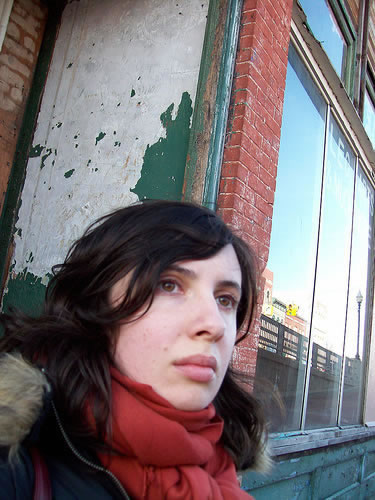
What made you think you could start a journal?
Gabriella Torres and I met at The New School where we both worked briefly on LIT. We found working for a large journal informative but also very frustrating, and we decided it would be great to try and do something on our own without the supervision of advisors, editorial boards, multiple editors, numerous readers, etc. As an undergraduate at Central Michigan University I had worked on a publication called Poets' Collective, which was a very DIY student-run venture, so I felt like I knew the various aspects of what it would take to get a journal out. Also we had the New York poetry community as a resource--so many people here have started journals or have worked on one at one time. Everyone was really helpful if we had any questions.

Now that you are several issues in, how are you feeling about the tiny?
I think both Gabriella and I have a love-hate relationship with the journal. We have talked about ending it on several occasions--I actually once prematurely announced the last issue of the journal on a DIY panel at the Poetry Project at St. Mark's Church. Whenever the question arises, we always decide we really love doing the tiny and want to continue doing it. There is definitely a financial burden we've taken on in deciding to do things completely off the radar. Every so often we talk about becoming "legit," applying for not-for-profit status, etc., but ultimately that isn't a direction we're interested in going in.
How do you and Gabriella divide or share editorial duties?
We're both very much involved in soliciting writers, reading submissions, making selections, deciding on page order, proofreading, and PR work. I tend to take on more of the production stuff (sending out proof pages, dealing with the printer, etc.) and Gabriella plans the best parties.
Is dealing with the production a drag or do you find it agreeable?
The production end really is the most stressful part. We were definitely naïve when we started the journal. We were excited about reading and selecting poems, and never really thought of the production or administrative roles. The first issue was the hardest because it was our first time doing it, but the second issue ran smoothly. For some reason the third issue returned to having some of the problems we had with the first, but I think that had to do more with our personal lives than anything else. It is always a huge relief the day I send all the files to the printer. Then there is a bit of nervousness that returns when the boxes arrive. I am always worried that when I open the box the journal is not going to look anything like we intended. Thankfully that has not happened yet. The only post-production disappointment I have had has been catching typos.
In addition to doing the tiny with Gabriella, you've started Lame House Press as a solo venture, and have published nine chapbooks so far. Were these the first books you ever made?
I had two writing courses my senior year in high school--creative writing in the fall and poetry in the spring. The same teacher taught both classes and at the end of each semester we had to make a chapbook. The first semester we made the standard 8.5 x 11 folded in half and stapled books. In the spring we learned how to do Japanese stab binding and made our books that way. I made a couple of books as gifts after that, but when I started Lame House was really the first time I seriously made a chapbook since high school.
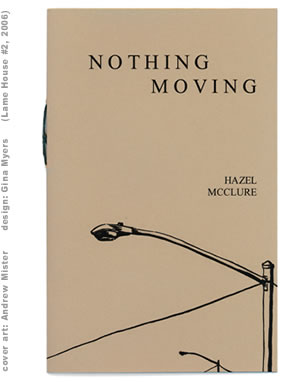
Do you enjoy all aspects of making books? And do you do all the work yourself?
I really do enjoy making these books. I do all the cutting and binding by myself. With the exception of the very first book, there has always been an artist involved. Andrew Mister has done a number of Lame House covers as has Dietmar Krumrey, and I have now opened it up to allowing the author to select a cover artist if he or she has someone in mind. After I have a manuscript I usually try to imagine what format would best work--the size and shape of the book, how it will be bound, etc. After I have an idea I present it to the author to make sure he or she is okay with it, or to hear what suggestions he/she might have. I'm really interested in hearing what the author thinks--I like to think of it as a collaboration of sorts, though I don't know that's how I was when I first started Lame House.

Do you see the publishing of chapbooks as a prelude to something else or, in terms of running a press, is making limited edition chapbooks where you want to keep it?
Right now I am happy making limited edition chapbooks. I have committed myself to a number of manuscripts that should keep me busy into the new year, and I haven't really thought beyond that at this point. I have in the past occasionally thought about putting out a full-length collection, but I don't know how many authors would be interested with my limited funds and limited means of distribution.
Since you aren't seeking submissions for Lame House, how are you choosing what to publish?
With the tiny I have had the amazing opportunity to publish some of my heroes--David Shapiro, Joseph Lease, Elaine Equi, Maggie Nelson, etc.--but one of the things I am most excited about as an editor is being able to publish new writers. The first chapbooks were all by friends who had little publication at the time. I then started to seek out manuscripts by people whose work I had seen and was interested in and wanted to read more of. In the instance of Arlo Quint's Photogenic Memory, I was there when he read it in the Zinc series and told him immediately afterwards that I wanted to publish it and he agreed.

You've had two chapbooks of your own poems published, Fear of the Knee Bending Backwards (H_NGM_N B__KS, 2006) and Stanzas in Imitations (New School University, 2007). When did you start writing poetry?
I started writing my senior year in high school and became pretty serious about it right away. Prior to that I was interested in visual art, particularly painting and photography, and had wanted to go to art school but that wasn't an option financially. At the community college I attended I took every writing course available and an art class here and there, but eventually the fine arts fell off completely for a number of years.
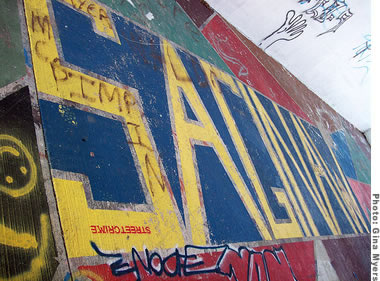
Where did you grow up and what brought you to New York?
I was born in Saginaw and lived there until right after my 20th birthday when I moved to Mt. Pleasant, Michigan, to finish up school at Central Michigan University. I moved to New York when I started grad school and had only been on the east coast three times prior to that--twice to Boston and once on a mini-road trip to visit various colleges with friends. I had applied to a few schools at that time and the New School was not on the top of my list, but after spending all of a day and a half in NYC, I couldn't stop thinking about it. When I went to bed at night I would just picture feet walking on the sidewalk and I knew I was going to move here.
How are you making a living? How do you feel about it?
I recently started working as a receptionist for a digital advertising agency. I am ambivalent towards it--the pay is almost enough but the lack of stress is brilliant.
Do you read on the subway? If so, what have you read most recently on the train?
I like reading fiction on the train, but sometimes that can be unsatisfactory as you reach your destination and haven't finished the chapter you're on or you really want to know what is going to happen next. Most recently I have been reading Virginia Woolf's A Writer's Diary whose short entries are well-suited to the stop and start of the subway. Lit journals are also good for subway rides.

Why do you write?
It sounds cheesy to say but I write because I can't not write. I will sometimes go six months without writing and then tell my friends that I'm no longer a writer--Hazel McClure always gets a kick out of this because she has probably heard me say it a hundred times over the course of our friendship. Inevitably there will be a night where I stay up all night writing. There seems to be an urgency, but I can't place my finger on it. I'm not sure what I want to do or say with my writing, but I don't think that is necessary to know either. I just turned twenty-seven. I think I have plenty of time to sort these things out later in life.
Do you have a full-length manuscript circulating?
A couple of months ago I put together a manuscript because a press was interested in seeing something. It was a collection of poems from grad school and a few I had written since then. They decided to go a different way, which I think is for the best because it didn't feel ready or right to me. Right now I am working on a book-length sequence called Behind the R that feels like it will be a more cohesive project.
Have you thought about publishing a chapbook of your own work?
I haven't ever considered publishing a chapbook of my own. The purpose behind Lame House Press is to promote other people's work. I have always been and continue to be much more excited about trying to find an audience for someone else's work than I am for my own work. I once self-published a broadside for the Sona Books Gift Exchange, but that was something separate from Lame House.
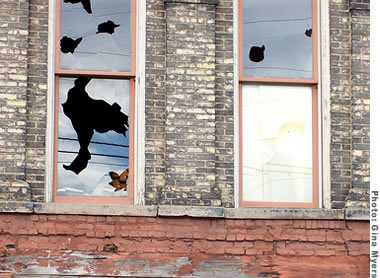
How do you feel about balancing all the jobs of publishing the work of others, on the one hand, with getting your own writing done and getting it out on the other?
I think one of my biggest problems is that I do not recognize my own limitations. I get very excited about various projects and take on more than I can handle. Usually my writing takes a backseat to my other projects--especially when I try to set deadlines for my editorial work (try being the operative word). I have also started writing reviews which is useful to keep me writing when I am not writing poems. This past month I have been writing a lot of poetry and have noticed that the reviews have fallen back. Ultimately I am still trying to work out how to balance things, but mostly I don't think about it and just sort of do whatever I feel like doing at the time, which is probably the least productive way to go about things!
Do you like giving readings?
I do like giving readings--especially in other towns. In your own scene things can become pretty insular so it is great to get out and see what is going on somewhere else. I recently read in South Boston and just returned from co-hosting a Lame and Narrow House event with Justin Sirois in Baltimore. It's fun to see a new city, be exposed to a new scene, and meet new people. I also don't produce a lot of writing, so when I read in NYC I worry that I am boring my friends who have heard me read the same poems over and over again.
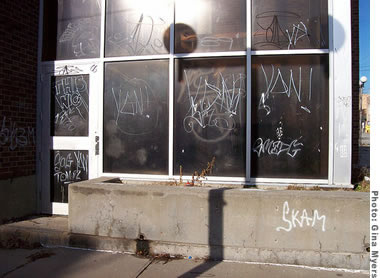
What part is visual art playing in your creative life now?
I have a strange relation to visual art because it was very important to me at one time, and then I abandoned it completely, and now coming back to it I feel extremely inadequate. Occasionally I'll buy a sketchpad and some pastels and try to draw again, but I am extremely hard on myself and usually give up in frustration at my inabilities.

I like your photographs--especially the buildings and signs, and "urban decay" as they're sometimes tagged at flickr. How do you feel about picture making in relation to writing?
I feel a really strong connection to post-industrial decaying landscapes from having grown up in Michigan. Environment and what it conveys is very important to me, and I'd like to think that I am able to capture some of the imagery and implied associations in my writing, or at the very least to create an environment/mood. I think the Behind the R series is most directly engaged with this landscape. Overall I'm very interested in the everyday, and these images are part of my everyday life, but domestic chores and the like are just as likely to enter my writing.
I guess this has really been more of a comment on the subject of my pictures and not so much the actual picture making process...

Could you say a little more about the Behind the R sequence?
Behind the R is connected to the year I spent living in Red Hook, Brooklyn, literally living behind the R as photographed. When Andrew Mister and I first moved in, our friend Charles Valle looked out the back window and said I should write a book called Behind the R. I took it as a joke but after a few months it seemed to make sense. The series incorporates signs as well as my daily experiences/observations of Brooklyn, and it steals a lot from other writers. Mathias Svalina called it my bus and subway poem. Perhaps there is this sense of movement but never really going anywhere. Part of it feels like a journal, a daily record of events. Upon seeing a short version of the series, Kevin Thurston asked "Do you realize how many pieces begin with the word 'today'?"
:
3 poems from Fear of the Knee Bending Backwards
by Gina Myers:
Tuesday
Or today buying a wooden picture frame
& its refusal to hang flat against the wall.
This doesn't change anything. The doorframe
solid there, just waiting for someone to pass.
On the other side of the wall: children laughing.
Add this to my list of failures: I have never seen
the tide rise or held a fragile life in my hand.
Never a gentle knife, a knock in the wind.
My magazine rack securing my place in the world.
The shelves of books a sign of the real.
The cup of tea I pour solves nothing.
I make a list of all the things I'd like to break.
The Window Facing Winter
If anger fades as it rises, folds itself
into a paper crane.
If happiness never wears a hat or meets
itself in the street
a broken picture frame left on the curb.
If happiness were a hero smiling
down from a parade.
The snow keeps falling. A door leads
to another door to a room
I've never entered.
All the shops are locking their gates.
We hold our hands over our mouth
for warmth, huddle over
what is not being said.
We have our secrets we prefer to keep.
We do not trust what is too good.
A shadow moves beneath the door.
Winter waits & listens & promises its worst.
& we go on preferring the intimacy
of an empty bed the clock
that ticks but does not turn.
A Catalogue of Fears
Fear of time travel.
Fear of needles or pointed objects.
Fear of numbers.
Fear of fire.
Fear of asymmetry.
Fear of forgetting.
Fear of poetry.
Fear of Bolsheviks.
Fear of mirrors.
Fear of empty rooms.
Fear of crowded rooms.
Fear of being locked in an enclosed place.
Fear of stairs or of climbing or falling down stairs.
Fear of the color blue.
Fear of waves or wave-like motions.
Fear of dining or dinner conversation.
Fear of dizziness or whirlpools.
Fear of skin lesions.
Fear of objects at the right side of the body.
Fear of objects at the left side of the body.
Fear of having committed an unpardonable sin.
Fear of nosebleeds.
Fear of hearing good news.
Fear of the word fear.
Fear of knees.
Fear of laughter.
Fear of crossing bridges.
Fear of growing old.
Fear of nudity.
Fear of saints or holy things.
Fear of Hegel.
Fear of road travel.
Fear of glass.
Fear of sleep or being hypnotized.
Fear of doctors or going to a doctor.
Fear of voids or empty spaces.
Fear of movement or motion.
Fear of the knee bending backwards.
Fear of cosmic phenomena.
Fear of having to balance.
Fear of words.
Fear of rabies or of becoming insane.
Fear of machines or of robots.
Fear of being bound or tied up.
Fear of memories.
Fear of moths.
Fear of myths, stories or false statements.
Fear of death or of dead things.
Fear of new drugs.
Fear of Nihilism.
Fear of the dark, of night, or of nightfall.
Fear of gaining weight.
Fear of vehicles.
Fear of the figure 8.
Fear of rain or of being rained on.
Fear of snakes.
Fear of being stared at.
Fear of heaven.
Fear of spelling mistakes.
Fear of suffering or of disease.
Fear of parasites.
Fear of swallowing, eating or being eaten.
Fear of philosophy.
Fear of daylight or sunshine.
Fear of choking or being smothered.
Fear of beards.
Fear or abnormal dislike of politicians.
Fear of rivers or running water.
Fear of quartets or of being drawn and quartered.
Fear of progress.
Fear of stuttering.
Fear of being tickled by feathers.
Fear of old things or traveling back in time.
Fear of the color red.
Fear of Satan.
Fear of writing in public.
Fear of silence.
Fear of trains, railroads or train travel.
Fear of being evaluated negatively in social situations.
Fear of dependence on others.
Fear of crosses or crucifixes.
Fear of symmetry.
Fear of being buried alive or of cemeteries.
Fear of taking tests.
Fear of the sea.
Fear of one's stepfather.
Fear of picnics.
. . .
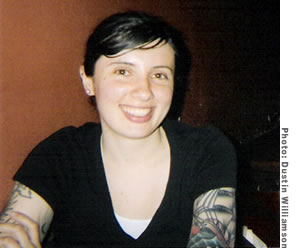
. . .
next interview: Clay Banes
. . .